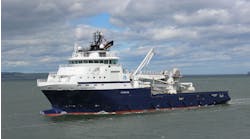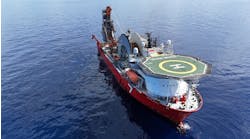Offshore staff
SAN ANTONIO, Texas–At last night’s opening reception for PennWell Corp.’s 2016 Subsea Tieback Conference & Exhibition, Shawcor officials were available to discuss several new products and technologies.
One of the new products, a hybrid field joint, has already been deployed for successful testing and validation as a prototype. The product will start to work on its first contract later this year, aShawcor official told Offshore.
The hybrid field joint has a dual-layer insulation designed to combat what the services company considers to be one of the critical issues facing offshore operators today: cracking joints during pipeline reeling, leading to expensive repairs made on the vessel while it is installed in the field. The Shawcor official explained that, as an integrated services company, it is uniquely positioned to provide an end-to-end solution that provides both line pipe and field joint coating services.
As pipeline walls and coatings increase in thickness, the volume of the field joint, the area where the pipes meet and are welded together, increases as well, the company official explained. The material can crack while reeling these thick-walled pipes. In this product, as of yet unnamed, Shawcor deployed a hybrid solution, forming an hourglass with its Injection-Moulded Polypropylene Insulation system to act as a barrier, reducing the temperature exposed to the infill, comprised of the company’s NEMO 1.1 epoxy-urethane hybrid coating system.
The new product has been validated with mechanical and thermal testing. The hybrid field joint was deployed on a subsea service vessel (SSV) in North America, and Shawcor said that after nearly one month of steady state exposure, it found the pipe to be depressurized, cooled, and removed from the vessel. No cracking was observed, and the company said that a lateral cross-section showed no foaming, disbondment, or other signs of damage from either the bend test or the SSV test.
03/23/2016


